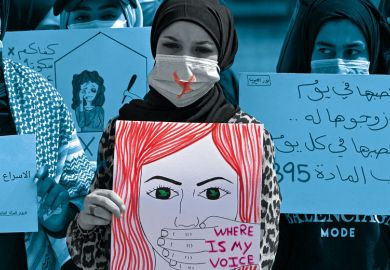Femininity in Flight traces the history of flight attendants in the US and, with it, the development of flight attendant unions and militancy. It is a welcome addition to the literature on the performance of femininity at work and on women's labour activism, but its real contribution is in the clear way it brings these elements together.
The first female "hostesses" were qualified nurses who were recruited so that they could save and treat passengers in the (all too likely) event of an aircraft crash. Their duties included not only serving cocktails and gourmet meals but also cleaning aircraft cabins and helping to push planes into their hangars at the end of the flight. They were portrayed as daredevil glamour girls, regularly mixing with the rich and famous and picking up husbands along the way.
The image of the gracious hostess persisted through the early postwar years, when flying became safer and more popular but was still restricted to the upper echelons of society. Air hostesses no longer needed nursing qualifications, but they were rigorously selected for their appearance and "feminine" qualities. Female attendants' hair, weight, skin, nails and underwear were all inspected, as were their family backgrounds and their "respectability".
As commercial airline travel expanded rapidly in the 1970s, the emphasis moved from stewardesses' propriety to their sexual allure. Airlines continued to insist on strict appearance criteria, including regular weight checks, but they now used their female attendants' attractiveness to shamelessly market them as sexually available. New uniforms included hot pants and knee-high "go-go boots", and ad campaigns featured pictures of attendants in bathing suits. But, as Kathleen Barry demonstrates, flight attendants were by no means simply swooning victims of male fantasies. They were highly organised and militant, using their glamorous image to further their campaigns for improved recognition and working conditions.
Barry argues convincingly that the glamorous image of the flight attendant created a contradiction. It offered "the wages of glamour" (like W. E. B.
DuBois's wages of whiteness) but also imposed working conditions - such as strict appearance controls, marriage bans and retirement at 32 - that attendants organised to fight against. The appearance criteria restricted entry to the job and made working conditions more stressful but also preserved the elite status of the group. As one of the first black flight attendants, quoted by Barry, said: "After all, next to being a movie star or a beauty queen no position or job so tenaciously heralds a woman's beauty and femininity."
This glamorous image also created contradictions in union struggles. The media were always happy to cover disputes involving such a photogenic workforce, but coverage tended to focus on stewardesses' bodies rather than their grievances. Until the 1970s, stewardess activists strove to improve their working conditions without undermining their glamorous image. It was only with the rise of second-wave feminism that flight attendants became prepared to challenge the notion that an attractive appearance was a vital qualification for the job.
Femininity in Flight shows flight attendants' experiences at work and in labour activism as archetypal of the experiences of many other women in pink-collar jobs. Flight attendants had to perform femininity to the highest possible standards yet were seen as successful only when their labour went unnoticed. Stewardesses, Barry argues, like other women doing "women's work", were imagined to be performing their natural role - caring for others and serving them - rather than carrying out real labour.
Employers added to the invisibility of their work by stressing stewardesses' physical attractiveness and charm - seen as natural attributes - rather than the professional skills they used. Male union leaders often patronised "the girls" they worked alongside and denied them equal status within unions for many decades.
From the outset, Barry acknowledges her debt to Arlie Hochschild's The Managed Heart - the ground-breaking text that revealed the very real work that is involved in performing "emotional labour". Femininity in Flight is firmly in this tradition and provides a detailed history of the effort that lay behind the perfect smiles of stewardesses over four decades. However, by applying this approach within a labour history, Barry also adds to our knowledge of how women's invisible emotional labour articulated with political activism in the postwar era. Flight attendants struggled for more than 50 years to be valued as safety professionals rather than gracious hostesses.
One of the great strengths of Femininity in Flight is the broad context within which Barry views flight attendants' struggles, in terms of women's work, union organisation and second-wave feminism. By contextualising her study so well and drawing out the parallels between stewardesses and other pink-collar workers, Barry has produced a book with wide appeal and relevance to many interested in labour history, the women's movement and the growth of service work.
Rosie Cox is lecturer in London studies, Birkbeck, University of London.
Femininity in Flight: A History of Flight Attendants
Author - Kathleen M. Barry
Publisher - Duke University Press
Pages - 296
Price - £60.00 and £14.99
ISBN - 0 8223 3934 X and 3946 3
Register to continue
Why register?
- Registration is free and only takes a moment
- Once registered, you can read 3 articles a month
- Sign up for our newsletter
Subscribe
Or subscribe for unlimited access to:
- Unlimited access to news, views, insights & reviews
- Digital editions
- Digital access to THE’s university and college rankings analysis
Already registered or a current subscriber? Login



